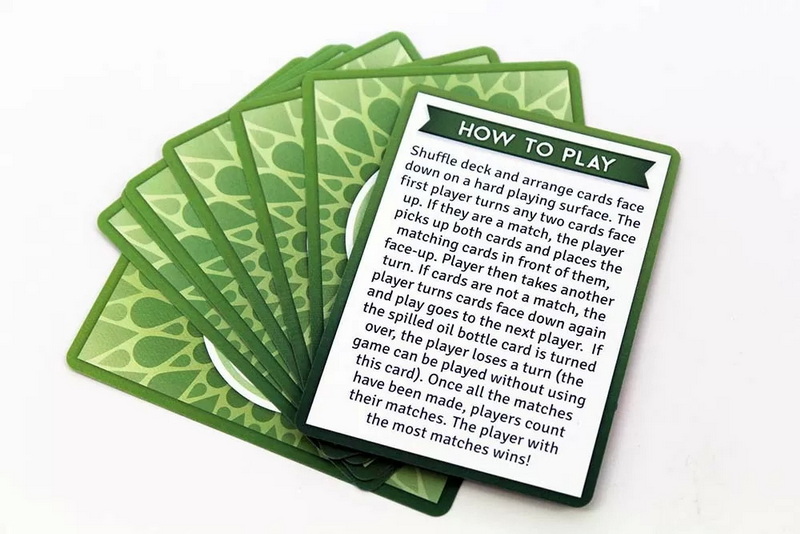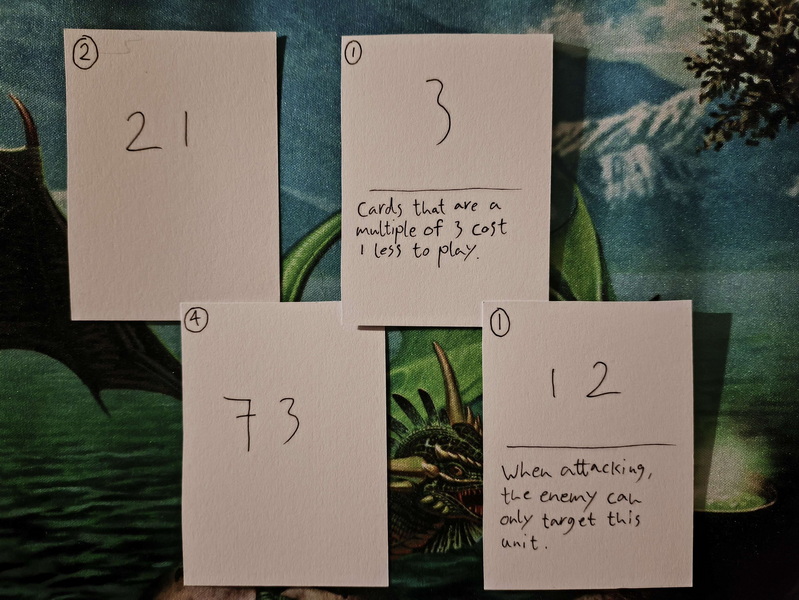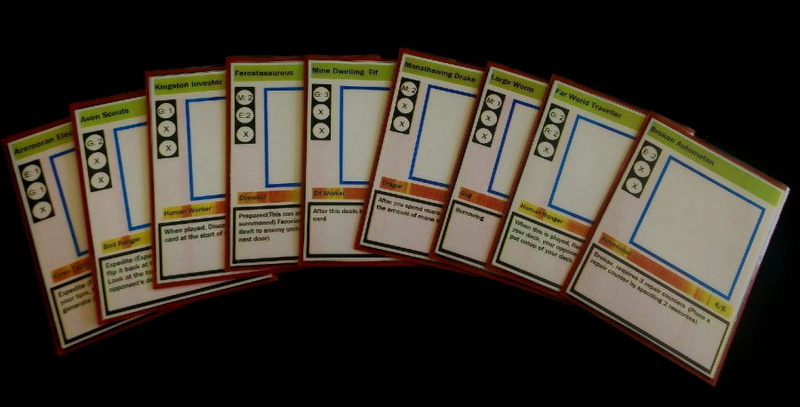Content Menu
● Conceptualization: Finding Your Theme and Mechanics
● Writing Down Your Ideas
● Prototyping Your Game
● Playtesting: Refining Your Game
● Finalizing Your Design
● Printing and Publishing Your Game
● Marketing Your Card Game
● Conclusion
● Frequently Asked Questions
>> 1. What types of card games can I create?
>> 2. How many players can participate in my card game?
>> 3. What should I focus on during playtesting?
>> 4. How do I ensure my game is balanced?
>> 5. Can I sell my card game after creating it?
● Citations:
Creating a card game can be an exciting and rewarding endeavor. Whether you're aiming to design a casual game for family gatherings or a complex trading card game (TCG) for competitive play, the process involves several key steps. This article will guide you through the journey of card game creation, from initial concept to final product, ensuring you have a solid understanding of the necessary components and considerations.

Conceptualization: Finding Your Theme and Mechanics
The first step in creating a card game is to narrow down your theme and core mechanics. This stage is crucial as it sets the foundation for your entire game.
- Choose a Theme: Decide on the overarching theme of your game. This could be anything from fantasy worlds, historical events, or even everyday life scenarios. A strong theme helps engage players and can influence the design of your cards. For example, if you choose a fantasy theme, you might include elements like magic spells, mythical creatures, and epic quests.
- Define Game Mechanics: Determine how players will interact with the game. Consider various mechanics such as resource management, turn-based actions, or cooperative gameplay. You might choose to borrow elements from existing games or innovate entirely new mechanics. For instance, you could implement unique card interactions that allow players to combine abilities or create combos.
- Research Existing Games: Familiarize yourself with popular card games in your chosen genre. Analyze their mechanics, themes, and player interactions. Understanding what works well in established games can inspire your design and help you avoid common pitfalls.
Writing Down Your Ideas
Once you have a clear idea of your theme and mechanics, it's essential to document everything. Writing down your thoughts helps clarify your ideas and ensures that you don't forget important details.
- Create Rule Outlines: Draft basic rules that govern gameplay. Consider questions like:
- What is the objective of the game?
- How do players win?
- What are the rules for card interactions?
- How many players can participate?
- Design Card Types: Decide on different types of cards (e.g., action cards, character cards, event cards) and their functions within the game. Each type should have unique attributes that contribute to gameplay dynamics.
- Develop a Backstory: If applicable, create a backstory for your game that enhances its theme. A compelling narrative can draw players in and provide context for their actions during gameplay.
Prototyping Your Game
With your ideas documented, it's time to create a prototype. This phase allows you to visualize how your game will play out in practice.
- Create Card Templates: Use software or simple drawing tools to design card templates that include spaces for card names, descriptions, costs, and effects. Tools like Adobe Illustrator or free alternatives like Canva can be helpful for designing visually appealing cards.
- Print Prototype Cards: Print your cards on cardstock or use blank playing cards to create physical prototypes. This allows you to test the feel of the cards and their interactions during gameplay.
- Set Up a Playtesting Environment: Choose a comfortable space where players can gather without distractions. Ensure there's enough room for everyone to spread out their cards and interact freely.

Playtesting: Refining Your Game
Playtesting is one of the most critical stages in game development. It involves having real players test your prototype to identify flaws and areas for improvement.
- Gather Feedback: After each playtest session, collect feedback from players regarding their experiences. Pay attention to aspects such as clarity of rules, enjoyment level, and any confusion during gameplay. Encourage honest criticism by creating an open environment where players feel comfortable sharing their thoughts.
- Observe Player Interactions: While playtesting, observe how players interact with each other and the game mechanics. Take notes on any areas where they struggle or seem confused; these observations can provide invaluable insights into potential improvements.
- Iterate on Design: Use the feedback to refine your game mechanics, rules, and card designs. This may involve multiple rounds of testing and adjustments before reaching a final version. Don't hesitate to make significant changes if something isn't working; flexibility is key during this phase.
Finalizing Your Design
Once you've playtested extensively and made necessary adjustments, it's time to finalize your design.
- Polish Rules and Cards: Ensure that all rules are clearly written and easy to understand. Finalize card designs with consistent formatting and artwork that aligns with your theme.
- Consider Artwork: If your game has a strong visual component, consider hiring an artist or using graphic design tools to create appealing artwork for your cards. High-quality visuals can significantly enhance player engagement.
- Create a Rulebook: Develop a comprehensive rulebook that explains all aspects of gameplay clearly. Include examples of play scenarios to help new players understand complex mechanics more easily.
Printing and Publishing Your Game
After finalizing your design, you can move on to printing and potentially publishing your game.
- Choose a Printing Method: Decide whether you want to self-publish by printing copies at home or use a professional printing service that specializes in card games. Research various printing companies to find one that offers high-quality materials at reasonable prices.
- Explore Publishing Options: If you're interested in wider distribution, consider crowdfunding platforms like Kickstarter or reaching out to publishers who specialize in tabletop games. A successful crowdfunding campaign can not only fund production but also build an initial player base excited about your game.
Marketing Your Card Game
Once your game is printed and ready for sale, it's essential to develop a marketing strategy to reach potential players effectively.
- Build an Online Presence: Create social media accounts dedicated to your game where you can share updates, artwork, and engage with potential players. Platforms like Instagram are particularly effective for showcasing visual content related to card games.
- Attend Gaming Conventions: Participate in gaming conventions or local board game meetups where you can showcase your game directly to enthusiasts. These events provide valuable opportunities for networking and gathering feedback from experienced gamers.
- Engage with Influencers: Reach out to tabletop gaming influencers who might be interested in reviewing or promoting your game online. A positive review from a respected figure in the gaming community can significantly boost visibility.
Conclusion
Creating a card game is a multifaceted process that requires creativity, patience, and attention to detail. By following these steps—from conceptualization through playtesting to final publication—you can develop a card game that not only reflects your vision but also provides an enjoyable experience for players.

Frequently Asked Questions
1. What types of card games can I create?
You can create various types of card games such as trick-taking games (like Hearts), matching games (like Rummy), shedding games (like Uno), or trading card games (like Magic: The Gathering). Each type has its own mechanics and player interactions.
2. How many players can participate in my card game?
The number of players depends on your game's design. Many card games accommodate 2-6 players, but some can be designed for larger groups or even solo play.
3. What should I focus on during playtesting?
During playtesting, focus on gathering feedback about the clarity of rules, balance between different cards or strategies, player engagement levels, and overall enjoyment of the gameplay experience.
4. How do I ensure my game is balanced?
Balance can be achieved through careful testing and adjustment of card powers and mechanics. Ensure no single strategy dominates gameplay by varying strengths among different cards and providing counterplay options.
5. Can I sell my card game after creating it?
Yes! Once you've finalized your design and printed copies of your game, you can sell it through various channels such as online stores, local gaming shops, or crowdfunding platforms like Kickstarter.
Citations:
[1] https://shuffledink.com/5-steps-to-creating-your-own-killer-card-game/
[2] https://thesciencesurvey.com/arts-entertainment/2021/03/21/blank-cards-how-do-you-create-a-card-game-from-scratch/
[3] https://www.ducksauce.games/blog/how-to-design-a-card-game
[4] https://vipspades.com/blog/different-types-of-card-games/
[5] https://www.pagat.com/mech.html
[6] https://tabletopbellhop.com/gaming-advice/game-mechanics/
[7] https://remptongames.com/2023/09/23/from-concept-to-card-how-to-design-an-epic-tcg-set/
[8] https://www.qinprinting.com/blog/how-to-design-a-card-game/
[9] https://www.pagat.com/class/
[10] https://prime.wiki/beginners-guide-series-tcg-history-and-game-mechanics/
































